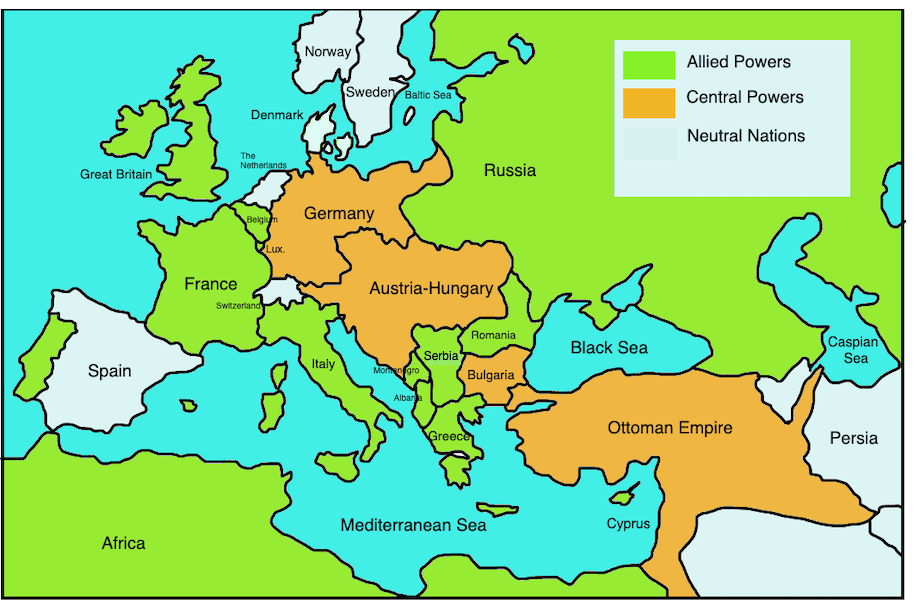| World War I Alliances |
| Introduction |
| Triple Alliance |
| Triple Entente |
| Central Powers |
| Allied Powers |
 |
The Allied Powers, also known as the Allies, played a pivotal role in World War I, collectively joining forces to combat the Central Powers. Comprising a diverse group of nations, the Allied Powers included Great Britain, France, Russia, Italy, and later the United States, among others. Together, they formed a formidable coalition determined to counter the aggression and territorial ambitions of the Central Powers, led by Germany, Austria-Hungary, and the Ottoman Empire.
The alliance between the Allied Powers was built on shared goals and a desire to preserve the status quo and protect their national interests. The conflict began in 1914, triggered by the assassination of Archduke Franz Ferdinand of Austria-Hungary, and quickly escalated into a global war.
Great Britain, as a major colonial power and with a vast naval fleet, played a vital role in the Allied Powers. Its navy controlled vital sea routes and blockaded Germany, severely impacting its supply lines. Additionally, British forces fought on multiple fronts, including the Western Front in France and Belgium, as well as in the Middle East and Africa.
France, having suffered significant territorial losses to Germany during the Franco-Prussian War of 1870-1871, sought to reclaim those territories. It fought valiantly against the Central Powers on the Western Front, enduring years of brutal trench warfare. French soldiers displayed remarkable resilience and courage in battles such as Verdun and the Somme.
Russia, initially part of the Allied Powers, was involved in the early stages of the war before the Russian Revolution in 1917 led to its withdrawal from the conflict. Its vast army confronted the Central Powers on the Eastern Front, engaging in intense battles with the Germans and Austro-Hungarians.
Italy joined the Allied Powers in 1915 after initially being part of the Triple Alliance with Germany and Austria-Hungary. Italy aimed to secure territories along its border with Austria-Hungary and launched offensives along the Italian front.
The entrance of the United States into the war in 1917 significantly bolstered the Allied Powers. The U.S. provided fresh troops, supplies, and resources to the coalition, which proved vital in tipping the balance of power in favor of the Allies. American forces played crucial roles in significant battles, such as the Meuse-Argonne Offensive, helping to hasten the end of the war.
The Allied Powers demonstrated remarkable resilience, resourcefulness, and determination throughout the war. Their coordinated efforts, combined with advancements in technology and tactics, ultimately led to the defeat of the Central Powers.
Following the armistice in November 1918, the Allied Powers participated in the Paris Peace Conference, where they negotiated the terms of peace treaties. These agreements, particularly the Treaty of Versailles, shaped the post-war world and imposed significant consequences on the Central Powers, including territorial losses, financial reparations, and political repercussions.